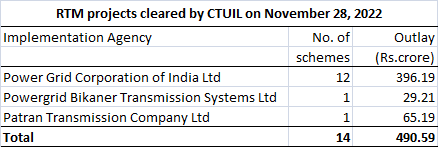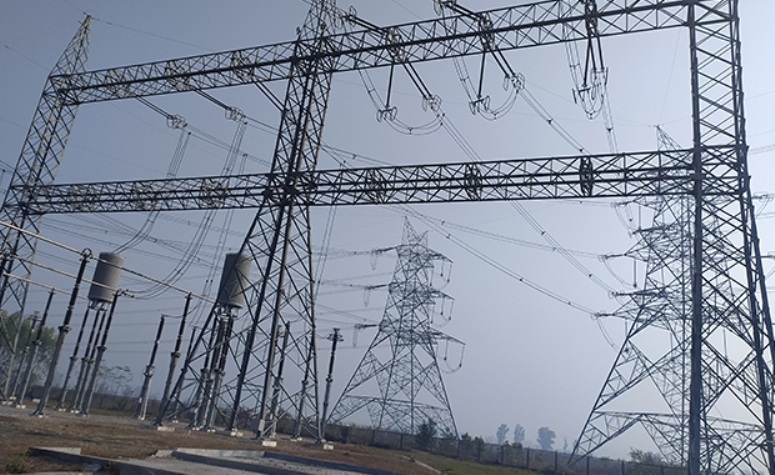Central Transmission Utility India Ltd (CTUIL), in a recent meeting, cleared 14 projects to be developed under the regulated tariff mechanism (RTM) mode. Power Grid Corporation of India Ltd (PGCIL) has received the highest number of these projects.
In a meeting held on November 28, 2022, CTUIL approved the implementation of 14 interstate transmission system (ISTS) projects to be developed under the RTM mode. These projects, with an aggregate outlay of Rs.490.59 crore, are spread over all the five grid regions – north, west, east, south and northeast.
PGCIL has been the most successful agency having been mandated as many as 12 of these projects entailing a total outlay of Rs.396.19 crore.
The remaining two projects have been allotted to Powergrid Bikaner Transmission Systems Ltd (PBTSL) and Patran Transmission Company Ltd (PTCL). While PBTSL is a wholly-owned subsidiary of PGCIL, the latter is a subsidiary of India Grid Trust (IndiGrid). PBTSL and PTCL are both developers of ISTS schemes in the TBCB mode.

PTCL is the developer of “Transmission system for 400kV Patran Substation” in Punjab. This project SPV was earlier owned by Techno Electric Engineering, and the project was commissioned in June 2016. In August 2018, India Grid Trust (IndiGrid) acquired 74 per cent equity stake in PTCL.
Returning to the 14 newly-approved projects to be developed under the RTM route, five are in the northern region (NR), followed by four in WR, two each in ER and SR, and one in NER.
The largest of the 14 projects is the “Western Region Expansion Scheme XXXI (WRES XXXI): Part C” that will be implemented by PGCIL. This project, costing Rs.86.01 crore, involves augmentation of transformation capacity of the 765/400kV Pune GIS substation by 1×1500 MVA interconnecting transformer. The project is scheduled to commission within 21 months from the date of issue of Office Memorandum (OM) by CTUIL, to the implementation agency.
CTU empowered
It may be recalled that in November 2021, the Union power ministry empowered CTUIL to approve ISTS scheme with an outlay of up to Rs.100 crore. Till then, all ISTS schemes were approved by the Union power ministry, following recommendations by the National Committee on Transmission (NCT). The motive behind this empowerment was to fast-track transmission projects, especially those that facilitated renewable energy evacuation.
With the revised guidelines, the process of clearing ISTS projects has been revised as:
- ISTS schemes up to Rs.100 crore will be approved by CTUIL
- ISTS schemes between Rs.100 crore and Rs.500 crore will be approved by NCT
- ISTS schemes above Rs.500 crore will be approved by the Union power ministry
For ISTS schemes up to Rs.100 crore, the approval by CTUIL also includes the mode of implementation (TBCB or RTM) as well as nomination of implementing agency.
Also read: PGCIL To Take Care Of CTUIL Expenses Till March 2024, Says CERC
Why RTM?
In a general sense, all ISTS schemes need to be implemented under TBCB mode. However, the power ministry permits the RTM route in exceptional cases. This is particularly true for small projects with low gestation period or large critical projects that need to be fast-tracked. The bidding process of projects structured on TBCB basis takes up much time – a situation that does not present itself in the RTM modality.
Small ISTS projects, say those costing less than Rs.100 crore, do not merit the selection of TBCB modality for obvious reasons. These projects are usually extensions of an existing TBCB project. Hence it is prudent in such cases to nominate these projects on RTM basis to developers of the existing TBCB projects.
Featured photograph (source: IndiGrid) is for representation only

